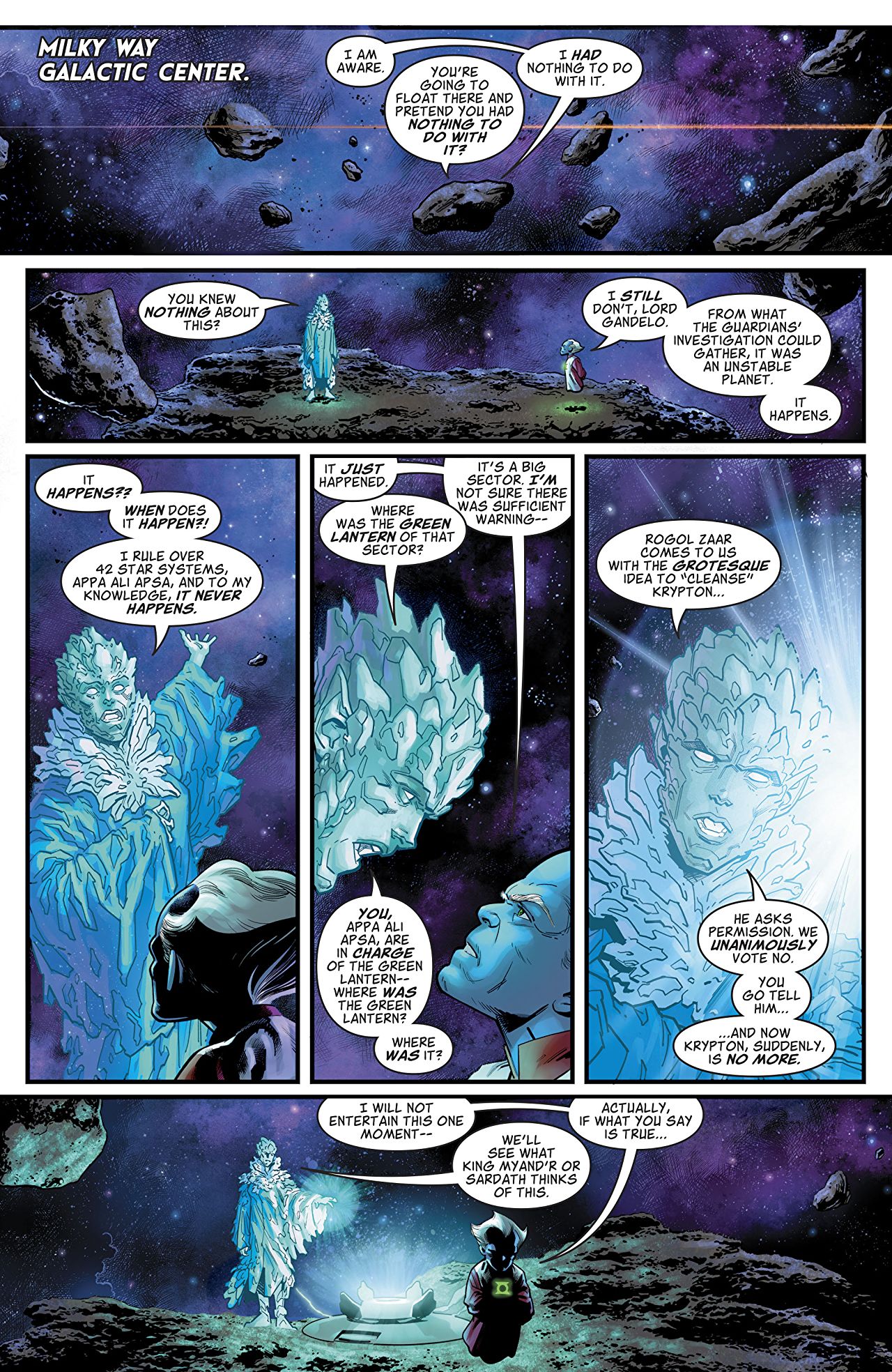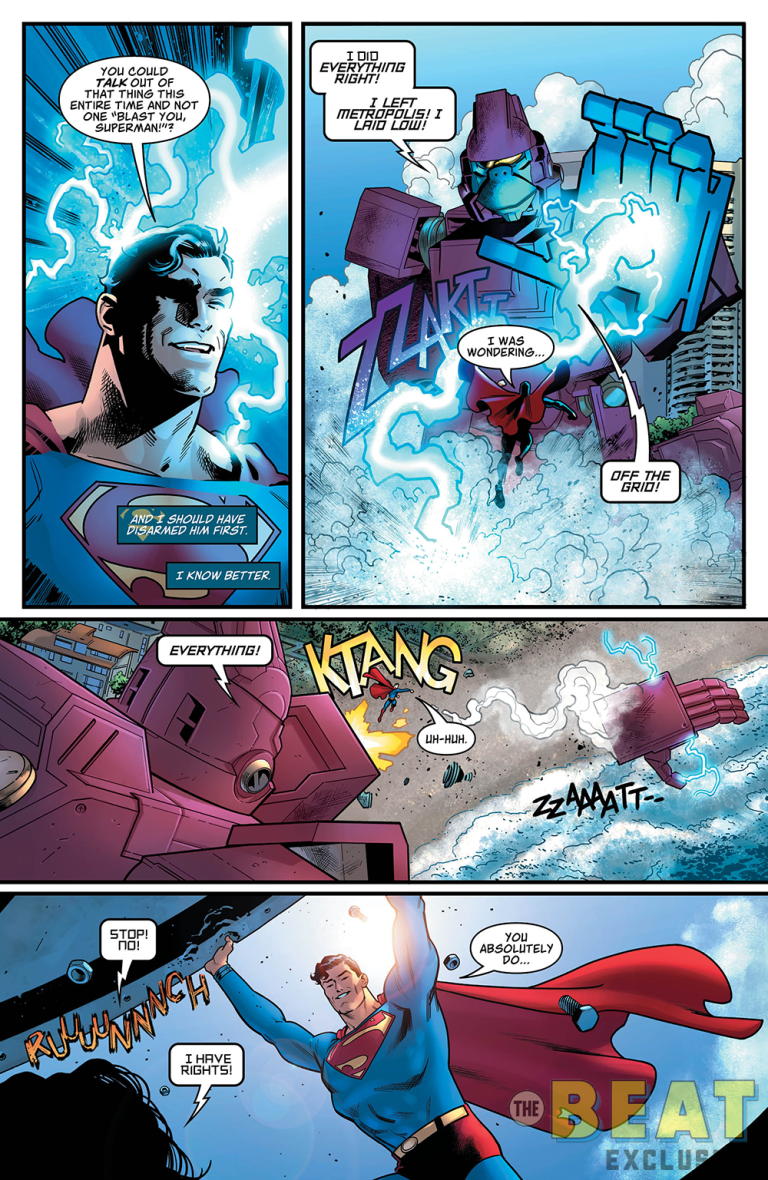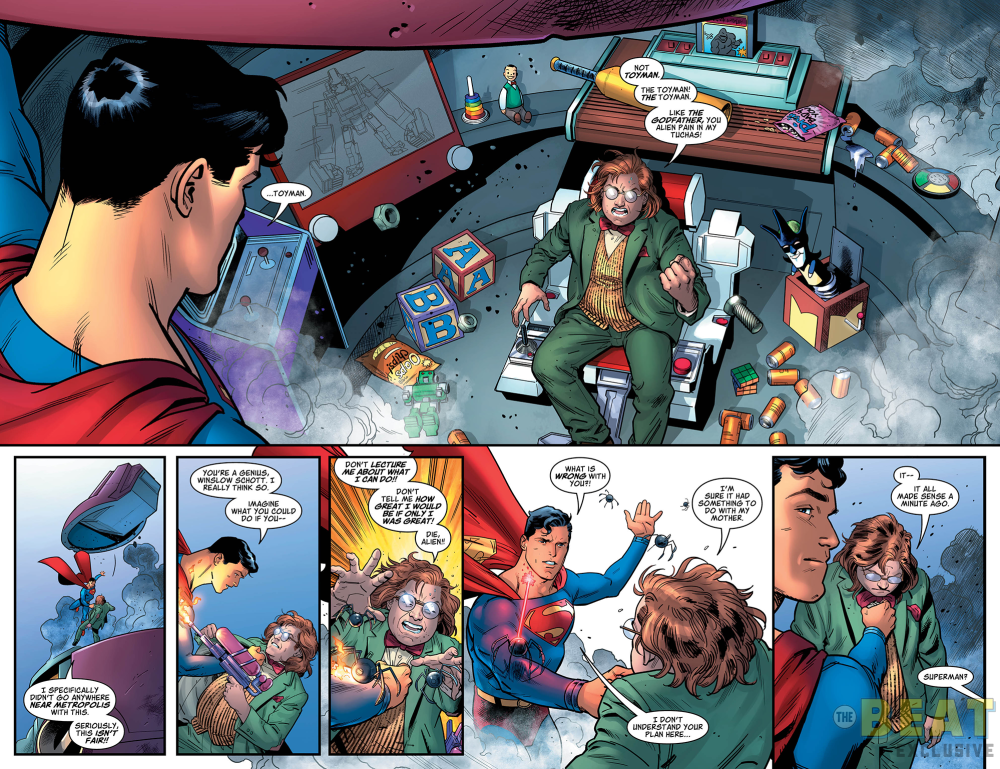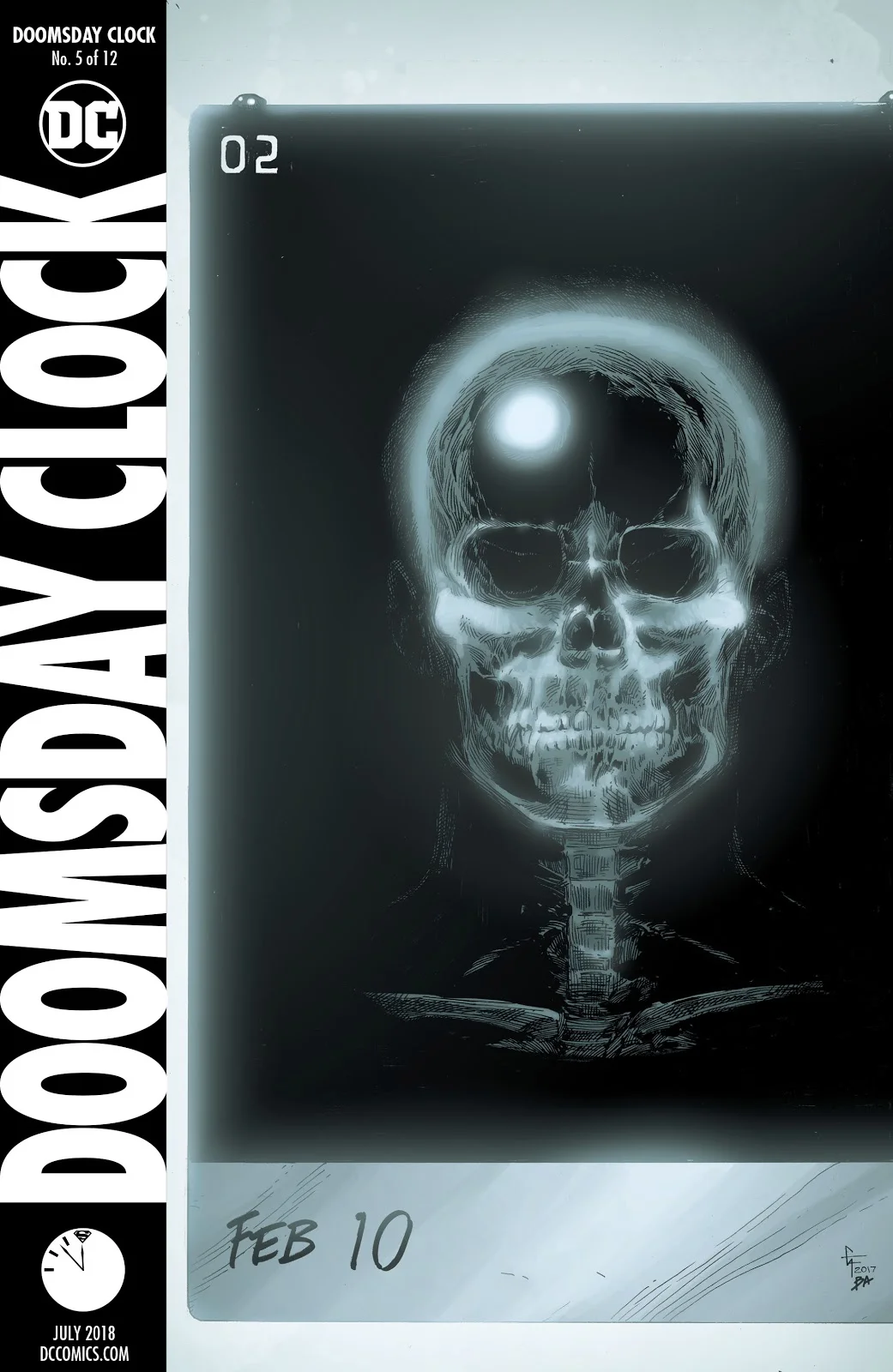Man Of Steel #2 // Review
Man Of Steel #2, by Brian Michael Bendis, Doc Shaner, Steve Rude, Jason Fabok, Alex Sinclair, and Josh Reed, sees Superman battle the Toyman and asks a serious question: where are Lois and Jon?
Much like the last issue, this one starts in the past--after the destruction of Krypton--with Lord Gandelo, one of the council of beings that Rogol Zaar asked permission of to destroy Krypton, asking the council’s Guardian of the Universe representative, Appa Ali Apsa, if he gave Zaar permission to destroy Krypton behind the council’s back. Appa Ali Apsa denies the accusation, telling Gandelo that they should all hope that Zaar died destroying Krypton because, if he turned against the council, they would all be in serious trouble. In the present, a mystery is brewing, as two reporters from the Daily Planet talk about the disappearance of Lois and Jon Kent. Meanwhile, Superman is off in Coast City, fighting the Toyman. Green Lantern shows up after the fight and talks to Superman, asking him where he’s been lately, but Superman brushes him off, flying back to Metropolis to deal with another fire. In the Vega Sector, Rogol Zaar finds out about Superman and rushes off to Earth to finish the job he started with Krypton.
Bendis is playing with multiple plot lines in this installment, and finds a way to make them all work. There’s Daily Planet drama, as the gossip columnist wants to get to the bottom of the Kent family’s mysterious disappearance, and Perry White laments the dying of the newspaper industry. Readers get more of a clue to what happened at the end of the last issue, but it’s not much more than a tantalizing tease. Add to that Superman dealing with his family’s disappearance and Rogol Zaar’s discovery and that’s a lot going on, but it all gets the time it needs to impact readers. At no point does the issue feel overstuffed with plot, and none of it feels like needless exposition, which can sometimes happen when you get info dumps in a Bendis comic. A lot of Bendis’ style involves telling, not showing, which can be very frustrating, but it works here because he combines the two. Sure, readers find out about Lois and Jon’s disappearance from a conversation between two Daily Planet reporters, but later, they’re shown the moment of the disappearance. Plus, the conversation makes sense in context, because it would be big news and reporters would want to get to the bottom of it and write the story.
Superman throwing himself into his work is also a nice touch. Superman doesn’t get time off to mourn whatever happened because the world needs him, but it feels like he’s using his superhero work as a buffer for his feelings. It’s easy to believe that he’s spending as little time as possible being Clark and most of his time as Superman, because it gives him a chance to focus on something else. This is a very human response to trauma, and it’s definitely something that Superman would do. He fights a never-ending battle, and never-ending battles don’t allow time off to be sad. Readers do get a scene showing him breaking down a bit and, again, this works because this sort of trauma can only be pushed away for so long. These are brilliant character moments. Another highlight of the book is Perry White talking about what’s happening to the print journalism industry and how hard it is to compete in a world where anyone can post anything online. It doesn’t really add much to the overall story being told, but it’s definitely something that would be wearing at Perry. Plus, it’s rare that readers see any vulnerability from Perry. Bendis talked a lot about making the Planet a bigger part of the Superman books, and he’s putting his money where his mouth is and making it interesting, at least.
The comic only has one flaw to it overall, but it’s a big one: Rogol Zaar has never heard of Superman somehow. Now, yes, it’s believable that he wouldn’t know that Superman was Kryptonian. That could stand to reason because, when Superman saves an alien race, he doesn’t always give his entire origin story. If Zaar had never seen Superman or his symbol, it would be pretty easy not to know he was Kryptonian. It stretches credibility, though, that he had never heard anything about Superman before. A universe is a big place, but Superman has been saving it for a long time, while also saving alien races and defeating conquerors from other races. News would spread everywhere about him. Bendis has always been known to ignore things to make a story work, but it’s particularly egregious here.
There are three different artists on this issue. The majority of the book is drawn by Doc Shaner and Steve Rude, while Jason Fabok gets only two pages. Sometimes, having multiple artists on a book can lead to clashing visual tones, but Shaner and Rude both have a similar style. Shaner’s line work is lighter than Rude’s, but both draw a classic Superman. There are a few panels where Rude’s heavier line work is a little muddled, but it’s only a few. Both gets parts that play to their strengths. Shaner gets the fight between Supes and the Toyman, and it looks great. One of his best panels is a close up on Superman eyes as he flies away from GL. It captures the turbulence inside Superman perfectly in such a simple panel. It’s great work. Rude gets Superman saving the burning building, but the highlight of his part of the book are the pages where Perry talks about the tribulations of the newspaper industry. There’s just so much emotion in the panels, and it takes what could have been a bland or annoying info dump and makes it something wonderful and melancholy.
Man Of Steel #2 is the kind of comic where it very easily could have turned out very bad. There’s so many plotlines going on that, if any of them failed, it could easily sink the book, and if the art wasn’t as top notch as it is, none of it would have worked. Fortunately, this isn’t the case. Rogol Zaar not knowing about Superman is a stretch, but so far, Bendis has transcended a lot of the negative tropes in his work and is turning in a very engaging Superman story that is hitting all the right spots.










